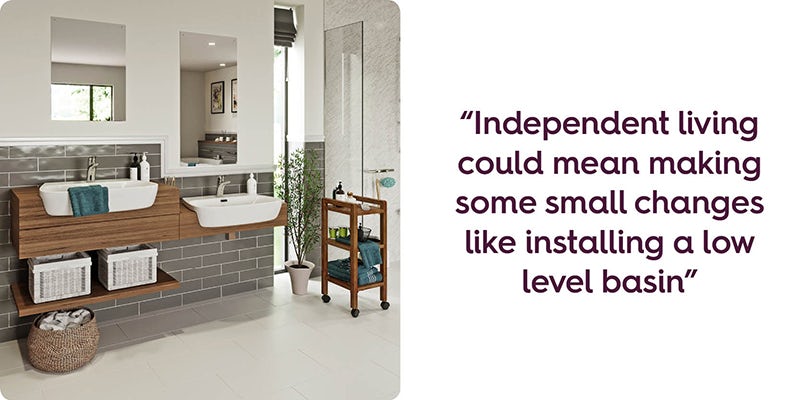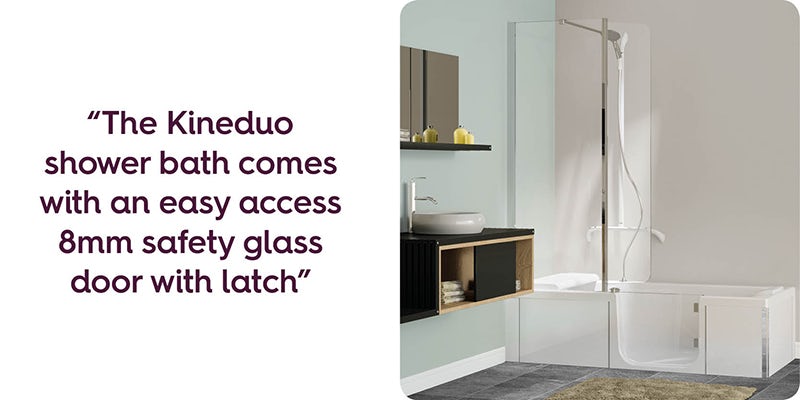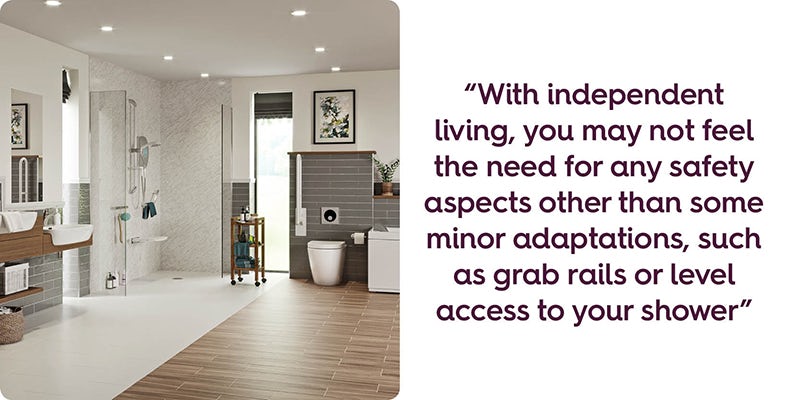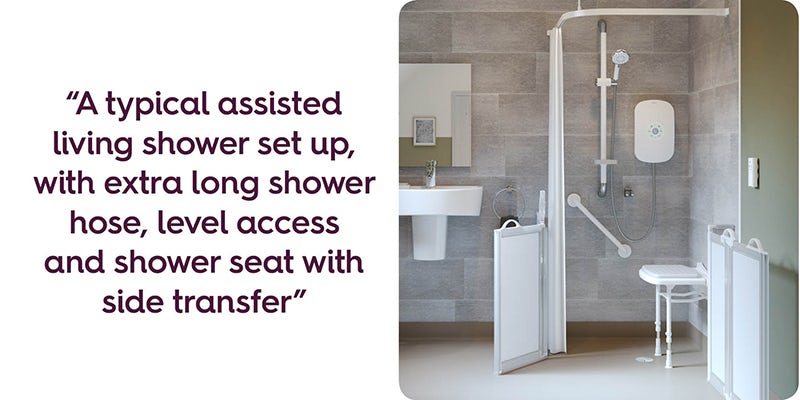We’ve recently launched an Independent Living category, with bathroom products aimed at the elderly and those with a lack of mobility.
However, when researching or even discussing this topic, you’ll often come across the terms “Independent Living” and “Assisted Living” being used interchangeably, so we thought it’d be a good idea to clarify the differences between the two and what this means when planning and buying for your bathroom.
What are the differences between Independent Living and Assisted Living?
1. Carer or not?
One of the main differences between these two terms is that Assisted Living generally means you will require a carer. The definition of a carer can range from a full-time professional who helps you with your daily tasks to a partner, relative or friend who either lives with you or visits occasionally to assist you with things.
If you do require a carer, you’ll then have to consider whether you need assistance in the bathroom or just other areas of the home. If you do require extra assistance in the bathroom, you’ll need to take a look at the scope of help you require. If it is a case of help with washing, a fully accessible shower may be required, and help on and off the toilet may need folding grab rails.
Independent Living means, for your situation, a carer is unnecessary and you can carry out your daily routine without help from anyone else. If you are elderly or lack mobility, but choose Independent Living, the changes and adaptations you’ll need to make to your bathroom may actually be very small indeed. In fact, you can still have a stylish bathroom with changes that simply blend into the background, as you’ll find in our guide to Independent Living.
2. Type of residence
Both Assisted Living and Independent Living can be achieved in your own home or even a shared property with friends or relatives. If you have moved into a dwelling that has been specially designed for the elderly or people with a lack of mobility, this can range from a block of independent flats with a communal area and security to a fully assisted care home, with staff on call 24 hours a day.
With a care home or specially-designed block of flats, the bathroom will, in almost all cases, be already set up to cater for either Assisted or Independent Living, depending on your needs. However, with a shared home or your own private property, it is more likely that a regular bathroom will need to be adapted.
Some examples of changes you can make for Independent Living include a bath with door opening on the side, to avoid having to climb in and out, grab rails to keep you steady on your feet and easy-to-grip taps and showers. Assisted Living bathrooms may go a step further with the types of adaptations made. Wet rooms, with level access shower areas, are not uncommon, along with low level basins and comfort height toilets.
3. Safety aspects
If you feel the risk of accidentally tripping or falling in your bathroom is greater, with Independent Living help might not be so forthcoming, whereas, with Assisted Living, help is usually not far away.
Assisted Living bathrooms often come with a number of emergency response buttons or pull cords that reach to the ground. Should you suffer a fall, you should be within reach of one of these emergency devices.
With Independent Living, grab rails and low slip surfaces are a good safety backup. For more security, it may be worth investing in a personal alarm, which you can wear round your neck or wrist and even in the shower. Should you suffer a fall, it will automatically dial a friend, neighbour or relative, who can come to your aid.
4. Bathroom usage
With Independent Living, the way you use your bathroom really shouldn’t deviate too much from your usual routine. Bathing, showering and going to the toilet should all be perfectly accessible for you, even with minor adaptations to your room layout.
With Assisted Living however, the frequency and access to your bathroom may change quite dramatically. Washing may be something that occurs at set times of the week, requiring help from a carer. In which case, a shower with an extra long hose may be a necessity to assist the carer, or a shower with a remote control, so they don’t also have to get unnecessarily wet. A shower seat with side transfer capabilities is also a consideration, should you require a wheelchair.
More about Independent Living
If you want to find out more about creating a stylish bathroom for Independent Living, take a look at our superb guide.









